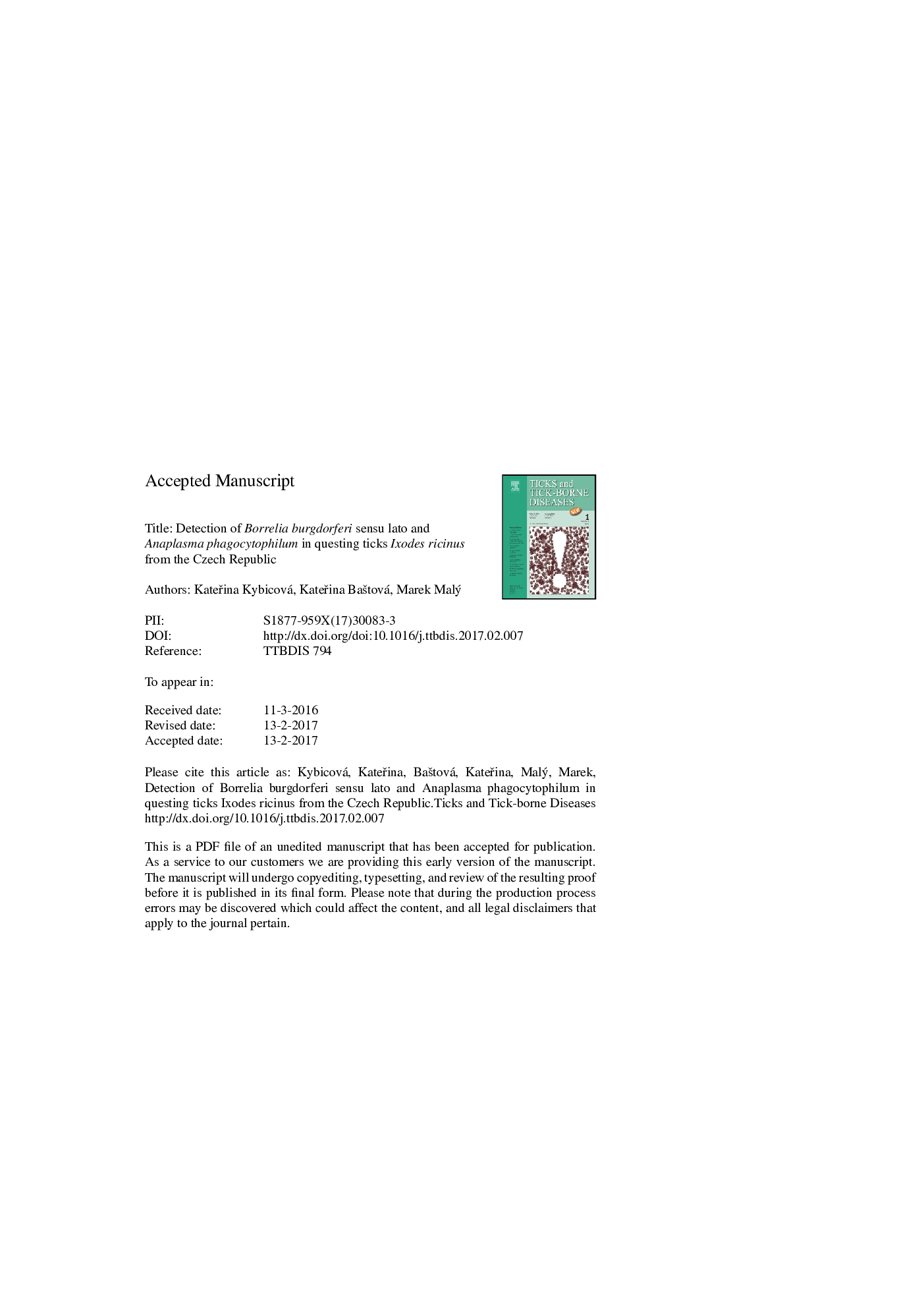| Article ID | Journal | Published Year | Pages | File Type |
|---|---|---|---|---|
| 5546291 | Ticks and Tick-borne Diseases | 2017 | 20 Pages |
Abstract
The aim of the present study is to compare the prevalence of Borrelia burgdorferi sensu lato (s.l.) and Anaplasma phagocytophilum in questing ticks by using molecular methods from spring to autumn 2007. A total of 526 Ixodes ricinus ticks were collected from vegetation in three different sampling sites, representing an urban area (city park), a suburban area (village) and a natural montane habitat. The prevalence of B. burgdorferi s.l. was 17.3% (7.5% in males, 18.7% in females and 20.2% in nymphs), while 4.4% of ticks (13.1% of males, 3.7% of females and 1.6% of nymphs) tested positive for A. phagocytophilum. We found higher rates of Anaplasma infection in ticks from the urban area (8.6%) than from the suburban (0.8%) and natural (1.6%) habitats in the spring months. The prevalence of Borrelia infection in the urban park increased significantly from spring (14% in March) to autumn (50% in October). The Anaplasma positivity in the urban area in the autumn months (2.2%) was significantly lower than in the spring and summer months (9.6%). The prevalence of A. phagocytophilum was significantly higher in male ticks than in females and nymphs. For B. burgdorferi s.l., the inverse was true. We conclude that infection risks associated with the presence of Anaplasma and Borrelia in ticks in cities may be comparable to those in natural ecosystems or may be even higher. Our results indicate the need for the surveillance of tick-borne pathogens in urban areas.
Related Topics
Life Sciences
Agricultural and Biological Sciences
Animal Science and Zoology
Authors
KateÅina Kybicová, KateÅina BaÅ¡tová, Marek Malý,
